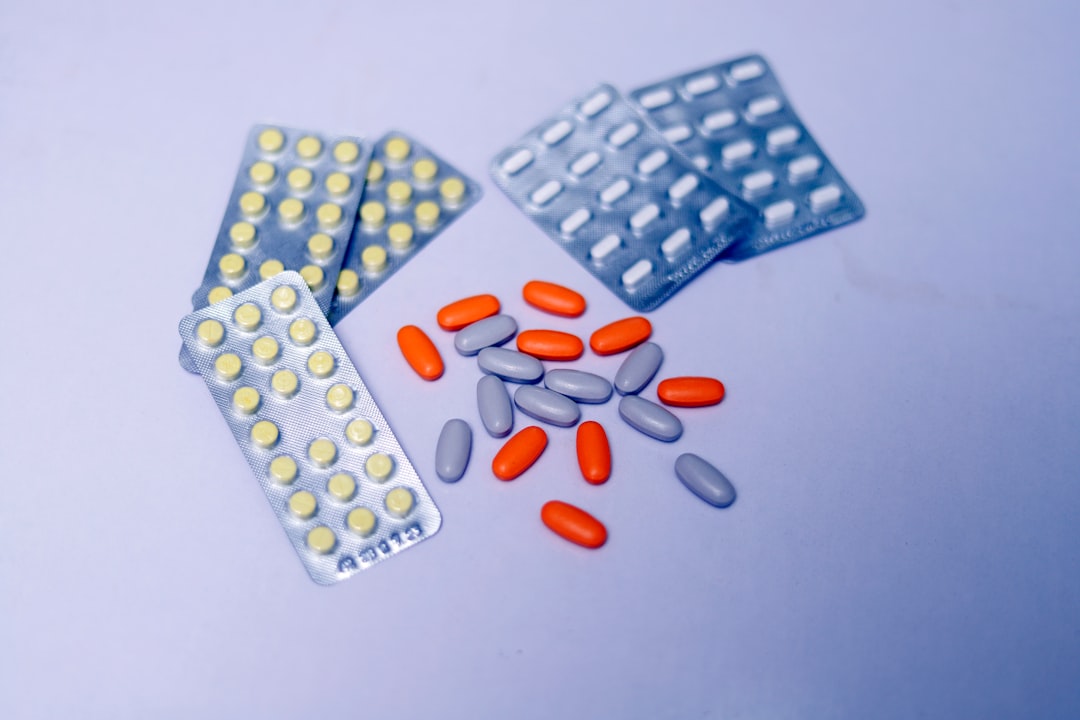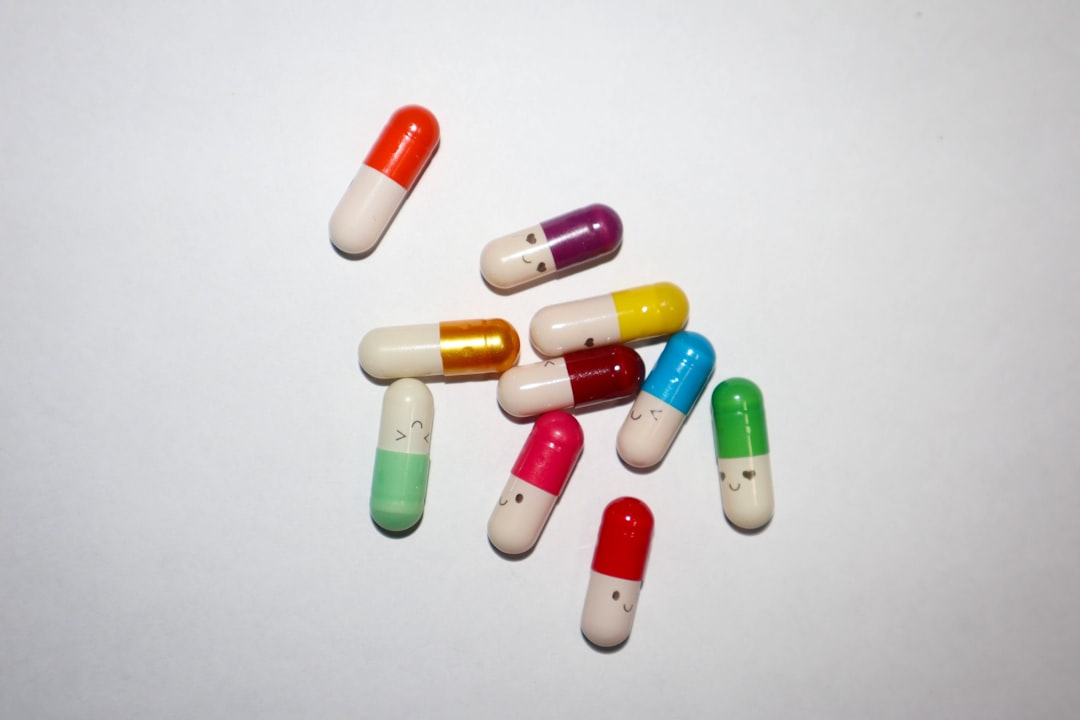

Engage prospects with a scan and streamline customer engagement with FREE QR code marketing tools by Sona – no strings attached!
Create a Free QR CodeFree consultation

No commitment

Engage prospects with a scan and streamline customer engagement with FREE QR code marketing tools by Sona – no strings attached!
Create a Free QR CodeFree consultation

No commitment
Pharmaceutical brands face strict compliance requirements and regulatory scrutiny such as the ABPI Code guidance while needing to ensure every patient-facing asset remains accurate. Outdated traditional methods like static brochures and manual reporting often hinder transparency, real-time updates, and actionable insights. This leads to missed opportunities in patient and healthcare professional engagement, risking lost educational chances and compliance issues.
QR codes provide a secure, regulatory-friendly way to distribute and monitor information throughout the pharmaceutical sector. By linking packaging, office displays, and print materials to dynamic digital resources, QR codes give instant access to compliant guides, safety data, and patient tools. They enhance adherence, build provider trust, and make it feasible to prove regulatory conformance with detailed audit trails and live engagement analytics.
This guide explains how pharmaceutical brands can leverage QR codes to resolve industry pain points, including missed touchpoints and messaging inconsistencies, and how to implement modern workflows that drive engagement, ensure compliance, and create measurable value for all stakeholders.

A central challenge in pharmaceutical marketing is keeping content compliant with evolving regulations. Paper-based materials and static links often become outdated, which risks non-compliance and confusion at the point of care. When medication guides, patient support information, or safety notices change, legacy workflows can require reprints or product recalls and still fail to catch every outdated asset in market. For practical approaches to create QR campaigns that drive action and stay compliant, consider guidance from healthcare-focused experts.
QR codes bridge this gap by making print materials dynamic and traceable. Instead of relying on static inserts or phone numbers, a single scan can route patients and providers to the most current documentation, videos, or forms. Teams can manage content centrally, update it in minutes, and create a complete audit trail that shows who scanned what, where, and when. This increases control, reduces risk, and equips compliance and regulatory colleagues with hard evidence during audits.
To replace outdated processes, map each analog task to a QR-powered workflow. For example, replace paper adverse event forms with a QR-secured digital report that routes to pharmacovigilance instantly, or replace static prescriber brochures with QR-linked HCP portals that reflect the latest label and training modules. The results are faster updates, fewer compliance risks, and measurable proof that the right messages reached the right audiences. Start creating QR codes for free.

Pharmaceutical brands are under pressure to integrate offline and online experiences for compliance and clarity. Every label, insert, brochure, or event booth must lead to an accurate, approved destination. Analog channels often miss high-intent interactions, such as when a caregiver sees a carton but discards the insert, or when an HCP grabs a printed leave-behind and forgets the URL. Those moments become dead ends that are hard to measure and even harder to improve. For context on how QR can modernize outreach, see this overview of modern marketing with QR.
QR codes turn those moments into trackable digital engagement. When a patient or provider scans, you control the content and collect the context. Destination pages can be personalized by audience type, device, or geography. Dynamic content design makes it possible to update references and safety information immediately after regulatory review, and analytics show which placements and messages are working; see QR codes in marketing for practical examples.
This combination of accessibility, control, and measurement is especially valuable in pharmaceuticals, where a single outdated claim or broken link can have meaningful regulatory consequences. By proactively instrumenting your offline materials, you ensure that every interaction advances education, adherence, and safety.

Pharmaceutical marketing spans diverse contexts: retail pharmacies, infusion centers, specialty clinics, medical conferences, and patient homes. Each touchpoint benefits from a specific QR format aligned with the action you want the user to take. The right format increases scan intent, reduces friction, and improves the quality of data you capture for compliance and analytics.
Several formats repeatedly prove useful in pharma. Web link codes are the workhorse for label content, videos, and program entry points. Form-based codes streamline adverse event reporting and feedback collection; if you’re using digital forms, this guide to Google Forms QR can help. SMS or email codes help patients reach support lines or request refills without dialing or composing messages. App download codes simplify onboarding to companion apps or remote monitoring tools that require device-specific links.
Choosing the appropriate format is both a design and compliance decision. If you must capture consent or validate identity, a form is likely best. If speed to information is the primary goal, a web link is preferable. Align your format choices with your medical, legal, and regulatory guidelines to ensure the experience is both usable and compliant.
Pharmaceutical engagement is fragmented across patient, caregiver, and provider audiences. Opportunities exist wherever physical materials already appear, especially when those materials influence behavior. Many of these touchpoints lack measurement, which leads to underinvestment in high-performing channels and overinvestment where returns are weak. QR codes make these surfaces interactive and measurable.
Start by auditing your offline footprint. Identify every place where a patient or HCP encounters your brand, from primary packaging to conference booths. For each, ask what outcome you want: education, program enrollment, refill, or feedback. Then deploy unique codes with clear calls to action and track results. The scan data will reveal where attention is highest and where content or placement needs improvement. For inspiration on HCP-focused initiatives, explore HCP engagement use cases.
These opportunities not only grow engagement but also improve the quality of compliance data. When auditors ask how a safety message was disseminated or whether updated content reached the market, you can provide detailed reports that tie scans and outcomes to specific assets.

Each interaction is a decision point in the patient or provider journey. Manual processes and static assets slow the journey, fragment data, and create compliance blind spots. QR-enabled workflows make these moments faster, more accurate, and measurable.
You can start with a few high-impact use cases and expand from there. Begin where friction is greatest or where measurement is weakest. Map each use case to a specific KPI such as enrollment rate, adherence, or adverse event reporting speed. The following use cases are proven starting points for pharmaceutical teams.
These use cases convert existing physical assets into digital gateways. By standardizing code generation, landing page templates, and analytics, you create a repeatable system that scales across brands and markets.
Many pharmaceutical brands cannot segment and retarget high-intent audiences who primarily engage offline. QR codes fix this by capturing scan context and linking it to audience profiles in your CRM, subject to consent and privacy rules. Each scan can indicate interest in a therapy area, stage of disease, or type of resource, which becomes the basis for tailored follow-up.
Deploy unique codes across packaging, clinic displays, starter kits, and event materials. Tag each code by asset type, channel, and audience. Use the scan metadata to infer journey stage and urgency. When integrated with platforms like Sona QR, these signals feed marketing automation, enabling timely and compliant outreach. For execution, see Sona’s Playbook titled “Intent-Driven Retargeting: Driving High-Impact Campaigns with First-Party Intent Signals.”
Audience building through QR engagement turns anonymous interest into structured data. By pairing this data with clear consent flows and role-based content, you create sophisticated segments that improve performance across email, SMS, and paid media, while staying within regulatory guardrails.
Disconnected campaigns lead to inconsistent messaging and lost opportunities with key decision makers. QR codes connect offline media to digital actions, which creates a cohesive experience and measurable outcomes. They help you coordinate messages across packaging, print, digital signage, events, and direct mail.
To design a connected journey, plan the desired action for each channel and place a QR code that makes that action immediate. Tag every code with campaign and channel parameters so that scan data becomes a shared performance metric for marketing, medical, and field teams. With Sona QR, you can manage all codes centrally, monitor performance, and sync scan data to your CRM and analytics tools.
By using QR codes as the connective tissue of your marketing mix, you ensure that every offline touchpoint has a measurable digital outcome. This not only boosts engagement but also elevates compliance oversight by creating digital traces of content delivery and updates.
Effective QR deployments must align with both business goals and compliance obligations. Oversights such as unclear calls to action, non-unique codes across assets, or missing analytics can reduce campaign value and introduce risk. A disciplined execution approach prevents these pitfalls and ensures traceability for medical, legal, and regulatory teams.
Use the following checklist to plan and launch compliant QR campaigns that deliver measurable outcomes. Each step includes guidance on design, deployment, and optimization, along with tips that reflect pharmaceutical realities such as label changes, consent requirements, and diverse audiences across HCPs and patients.
Define precisely what the QR experience should accomplish. For example, enable medication safety registration, streamline adverse event reporting, or enroll patients in a support program. Align the use case with a clear KPI such as completion rate, time to report, or refill lift.
Consider which analog process you are replacing and how the QR version improves the experience. If you are moving from a printed brochure to a QR-linked video guide, set goals for content completion and knowledge uplift. If you are replacing manual sign-in sheets at an HCP event, ensure you can validate identities and export attendance data for accreditation.
Select between static and dynamic codes. Static codes are acceptable for evergreen content with no need for updates or tracking. Dynamic codes are recommended for most pharmaceutical use cases because they support editing destinations post-print, A/B testing, and detailed analytics.
Align your choice with compliance requirements. If you need to update destinations after a label change or track scans by geography, dynamic codes are essential. With Sona QR, you can also add UTM parameters, set expiration rules, and enforce access controls where appropriate.
Design for scannability and clarity. Add a clear border, sufficient contrast, and a recognizable brand mark. Include a benefit-driven call to action that sets expectations such as Scan for safety updates or Scan to enroll in support. Consider adding a short URL as a fallback.
Test across real conditions. Confirm that the code scans well on glossy packaging, matte brochures, or large-format signage under different lighting and angles. Validate that the landing experience loads quickly, detects device type, and routes correctly. For creative integration ideas, see innovative advertising.
Place codes where target audiences already engage: primary packaging, starter kits, pharmacy counters, clinic posters, and conference materials. Use unique codes for each placement to capture attribution and compare performance across channels and messages.
Coordinate deployment with field and pharmacy staff. Provide talking points and quick-reference guides so staff can prompt scans and explain the benefit. For HCP environments, ensure codes are placed at eye level and near compelling headlines that match clinical interests.
Monitor scan data in real time. Track metrics such as total scans, unique scanners, time of day, device type, and location. Analyze drop-off points in the landing flow to identify where users abandon the process and why.
Iterate with controlled changes. A/B test calls to action, landing page designs, and content positioning. Use insights to refine creative, placement, and follow-up workflows. With Sona QR, push updates without reprinting and sync performance data to your CRM for downstream analysis.

Pharmaceutical marketers often struggle to see which assets drive meaningful engagement, adherence, or conversions. Traditional reporting measures distribution volume rather than outcomes, which makes ROI unclear and compliance difficult when scan data is not attributed or centralized. QR codes change that by producing granular signals that connect offline exposure to digital actions.
To move from engagement to revenue or clinical impact, brands must enrich scan data with identity, consent, and outcomes. This requires a platform that can track scans at the asset level, attribute them to audience segments, and tie them to downstream behaviors like form completions, enrollments, or refill events. When that pipeline is in place, marketers can demonstrate how scans support adherence programs, HCP education, or patient support outcomes. For measurement strategy, read Sona’s blog post “The Essential Guide to Offline Attribution: Maximizing ROI Through Offline Channels.”
When scan analytics are part of your performance stack, QR codes become more than gateways. They become measurable moments of intent that improve patient experience and support regulatory needs while quantifying business impact.
Scaling QR deployments requires consistent execution, robust segmentation, and clear internal enablement. Without standards, brands risk generic experiences, incomplete data, and missed follow-up opportunities. The right practices elevate scan rates, improve data quality, and accelerate outcomes.
Focus on the tactics that match your most common media and the journeys you want to support. For example, brands with broad DTC presence should prioritize clear CTAs on packaging and out-of-home placements. Brands that invest heavily in HCP engagement should focus on conference materials, rep leave-behinds, and credentialed access flows.
Creative deployment ideas can amplify results. For example, add a peel-off QR card in starter kits that patients can stick on a fridge for quick access to dosing reminders, or place QR tags on HCP badge lanyards at conferences that link to scientific updates filtered by specialty. The key is to match the code to a clear benefit and a natural moment of need.
QR codes have become a strategic foundation for solving critical challenges in pharmaceutical marketing. They enable compliant, transparent interactions across the fragmented patient and provider journey. They reveal previously anonymous engagement signals that point to real intent and unlock targeted follow-up. They also generate an audit-ready record of every touchpoint, which supports regulatory scrutiny with confidence.
Integrating QR-powered workflows across both in-person and digital channels turns physical assets into dynamic platforms for education, support, and conversion. The result is a patient-centric, compliance-driven experience that moves people from awareness to action while maintaining control over message accuracy and timing. With Sona QR for creation, management, and analytics, and Sona.com for identity resolution and multi-touch attribution, pharmaceutical teams can connect scans to outcomes and prove value across brands and markets. Start creating QR codes for free.
Pharmaceutical brands that embed QR codes throughout the product and patient lifecycle resolve widespread industry pain points. They uncover hidden engagement, enable personalized communication at scale, and create audit-ready compliance. By unifying analog and digital touchpoints through analytics-driven strategy, marketing, compliance, and regulatory teams can meet strict standards while capturing measurable engagement. Each scan becomes a step toward better health outcomes and stronger business performance.
QR codes have revolutionized the pharmaceutical brands industry by transforming compliance from a static obligation into a dynamic, traceable process. Beyond ensuring regulatory adherence, QR codes enhance patient safety, streamline verification, and improve supply chain transparency. Imagine instantly verifying a drug’s authenticity or tracking its journey from production to patient with a simple scan—minimizing risks and building trust at every touchpoint.
With Sona QR, you gain the power to create dynamic, trackable QR codes that update in real time without costly reprints. Every scan provides actionable data, helping you monitor compliance, improve patient engagement, and reduce counterfeit risks effortlessly. Start for free with Sona QR today and turn every code into a vital compliance checkpoint and a trusted connection with your customers.
Pharmaceutical brands can link QR codes on packaging, brochures, and displays to dynamic digital resources that provide up-to-date medication guides, videos, and patient tools, enhancing adherence and education.
Best practices include choosing dynamic QR codes for version control, placing codes on high-impact channels, designing clear calls to action, testing scannability, using unique codes for attribution, and integrating scan data with CRM systems.
QR codes enable central content management with instant updates, create audit-ready scan logs showing who accessed what and when, support regulatory requirements through version control, and reduce risks associated with outdated materials.
Pharmaceutical brands can deploy QR codes on prescription packaging, patient starter kits, HCP materials, event signage, public spaces, and direct mail to drive education, program enrollment, adverse event reporting, and event engagement.
QR codes on conference materials, rep leave-behinds, and badges can provide HCPs with instant access to clinical summaries, CME sign-ins, and scientific updates, enabling segmented follow-up and accurate attendance tracking.
Web link codes for dynamic content, QR-secured digital forms for reporting, SMS or email codes for support contact, app download links for companion apps, and vCards for MSL contacts are commonly used formats.
QR code scan data provides detailed analytics by time, location, and device, enabling marketers to track engagement, identify drop-off points, A/B test content, and update landing pages without reprinting materials.
Integrating QR codes connects offline media to digital actions, ensures consistent messaging across channels, creates measurable outcomes, and enhances coordination among marketing, medical, and field teams.
By deploying unique QR codes tagged by audience and channel, brands can capture scan context, segment users by role and intent, and sync data with CRM and ad platforms to enable compliant, tailored follow-up.
Steps include defining a clear use case with measurable KPIs, selecting the appropriate QR code type, designing and testing for scannability, deploying codes across relevant channels with unique identifiers, and monitoring scan data for optimization.
Use Sona QR's trackable codes to improve customer acquisition and engagement today.
Create Your FREE Trackable QR Code in SecondsJoin results-focused teams combining Sona Platform automation with advanced Google Ads strategies to scale lead generation

Connect your existing CRM

Free Account Enrichment

No setup fees
No commitment required

Free consultation

Get a custom Google Ads roadmap for your business






Launch campaigns that generate qualified leads in 30 days or less.
